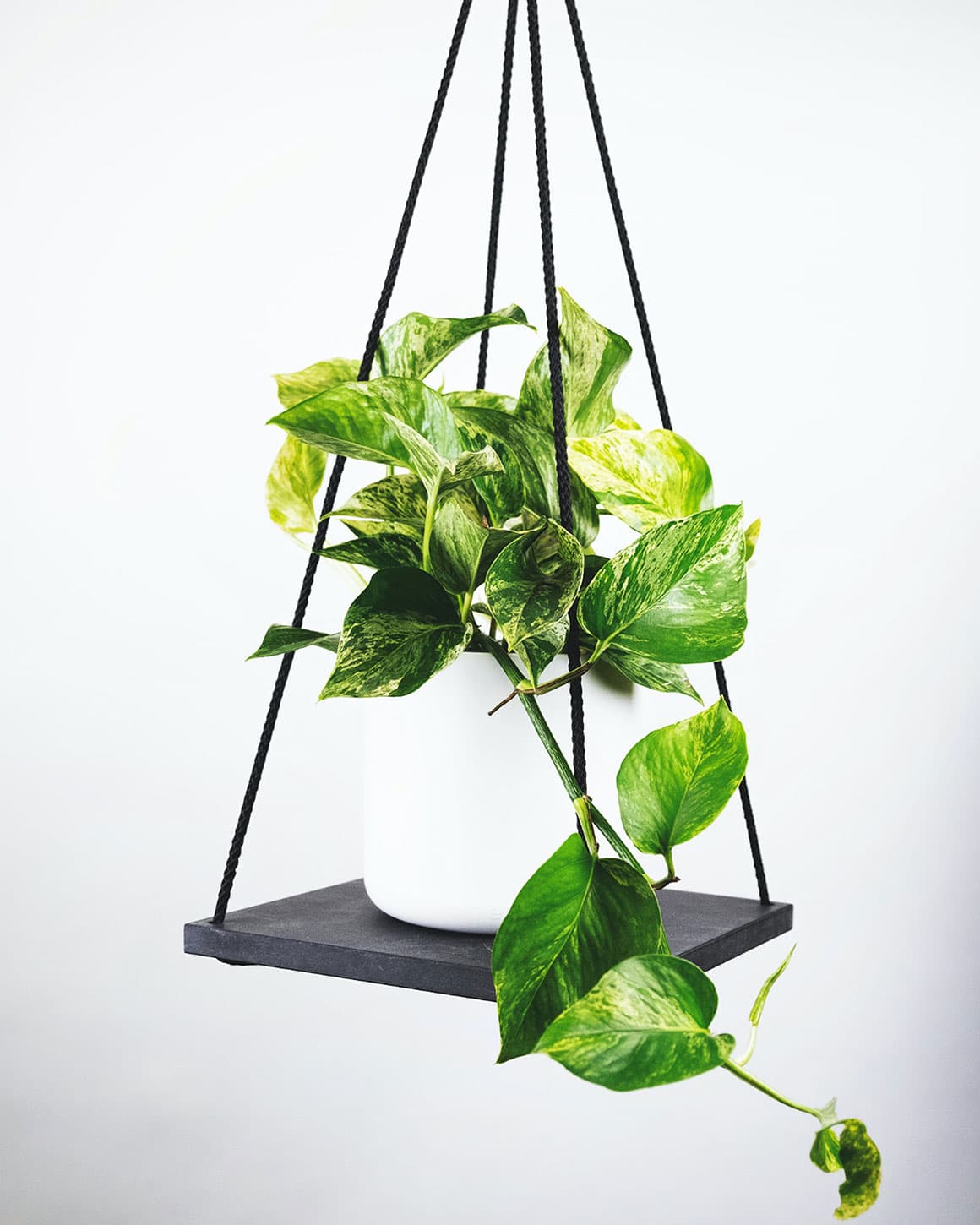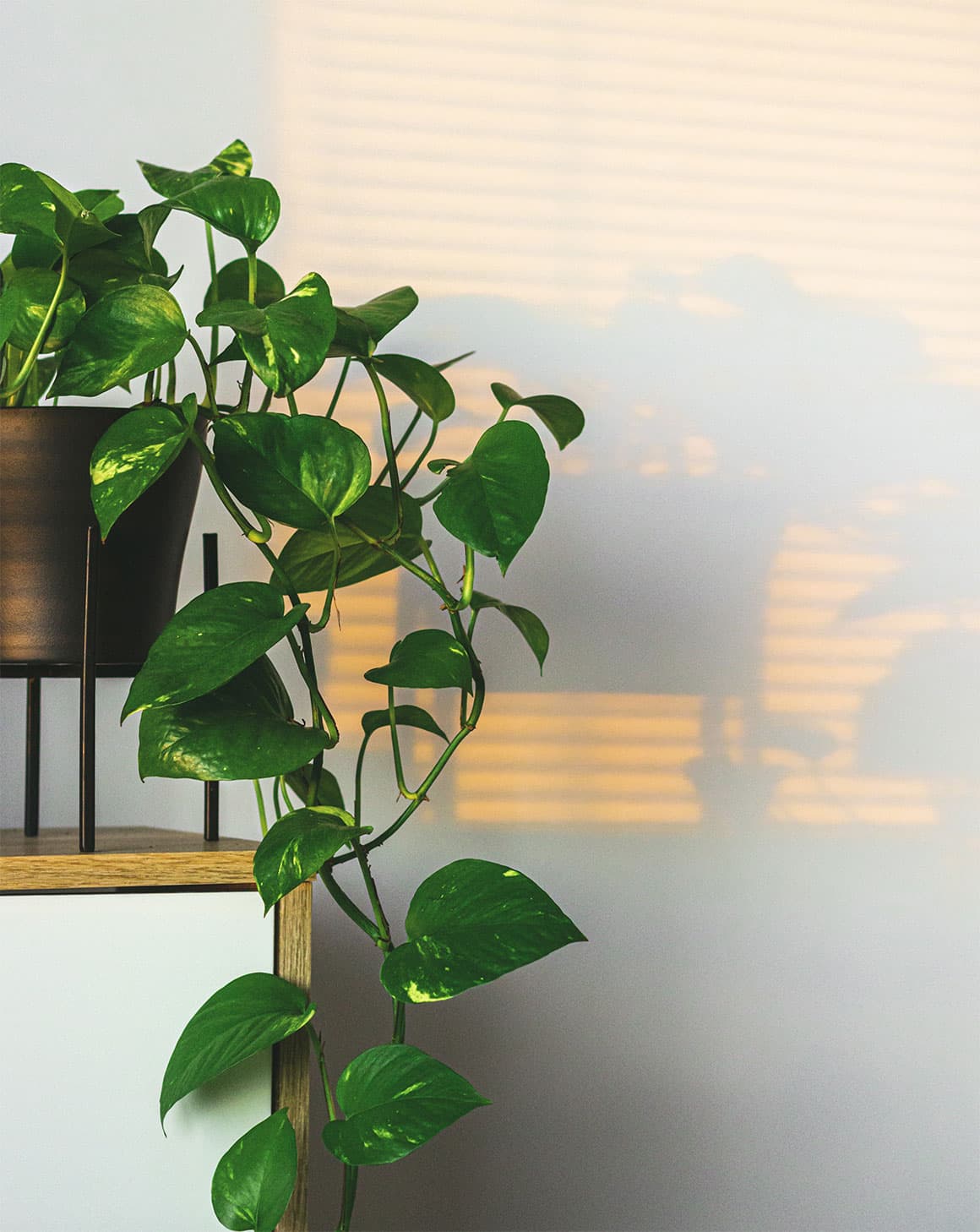Pothos plants, scientifically known as Epipremnum aureum, are popular houseplants loved for their vibrant foliage, easy-care nature, and air-purifying qualities. With their cascading vines and heart-shaped leaves, Pothos plants add a touch of elegance to any indoor space. Whether you’re a beginner or an experienced plant enthusiast, understanding the key aspects of Pothos care will help ensure their health and longevity. In this article, we’ll delve into the essential guidelines for caring for your Pothos plant.
Pothos Plant Care Guide

Light Requirements
Pothos plants thrive in moderate to bright indirect light. They can tolerate lower light conditions but will exhibit slower growth. Avoid direct sunlight, as it can scorch the leaves. Place your Pothos near a north or east-facing window, or provide filtered light through sheer curtains or blinds.
Temperature and Humidity
Pothos plants prefer average room temperatures between 60°F and 85°F (15°C to 29°C). They can tolerate slightly cooler temperatures but are sensitive to cold drafts. Maintain a humidity level of 40% to 60% to provide a comfortable environment for your plant. If the air is dry, consider using a humidifier or placing the pot on a tray filled with water and pebbles to increase humidity.
Watering
Proper watering is crucial for Pothos plants. Allow the top inch (2.5 cm) of soil to dry between waterings, and then thoroughly water the plant until water drains from the bottom of the pot. Avoid overwatering, as it can lead to root rot. Pothos plants are more forgiving of underwatering than overwatering, so it’s better to err on the side of caution.
Soil and Potting
Pothos plants thrive in well-draining soil. Use a high-quality potting mix that retains moisture without becoming waterlogged. A mixture of peat moss, perlite, and compost works well. Choose a pot with drainage holes to prevent water from pooling at the roots. Repot your Pothos every two years or when the roots start to outgrow the pot.
Fertilisation
Pothos plants are not heavy feeders but can benefit from occasional fertilisation. During the growing season (spring and summer), apply a balanced houseplant fertilizer diluted to half strength every four to six weeks. Avoid fertilising during the winter months when growth slows down.

Pruning and Propagation
Regular pruning helps maintain the shape and appearance of your Pothos plant. Trim back leggy vines or remove any yellow or diseased leaves to encourage new growth. Pothos plants are easy to propagate through stem cuttings. Simply cut a healthy vine below a node, place it in water or moist soil until roots develop, and then transfer it to a pot.
Pest Control
Pothos plants are generally resistant to pests, but occasionally they can attract mealybugs, spider mites, or aphids. Regularly inspect your plant for any signs of infestation, such as webbing, tiny insects, or sticky residue on the leaves. Treat the affected plant with a gentle insecticidal soap or wipe the leaves with a damp cloth to remove pests.
Decorative Use
Pothos plants are versatile and can be displayed in various ways.
They thrive in hanging baskets, on shelves, or in pots placed on surfaces or stands.
Their cascading vines make them ideal for trailing down bookshelves or hanging from macrame hangers, adding a touch of greenery to any room.
Pothos Plants Care Guide Conclusion
By following these care guidelines, your Pothos plant will flourish and become a beautiful addition to your indoor oasis. Remember to observe your plant’s specific needs and adjust care accordingly. With their resilience and low-maintenance nature, Pothos plants are perfect for both beginners and seasoned plant lovers, bringing a breath of fresh air and beauty to any living space.